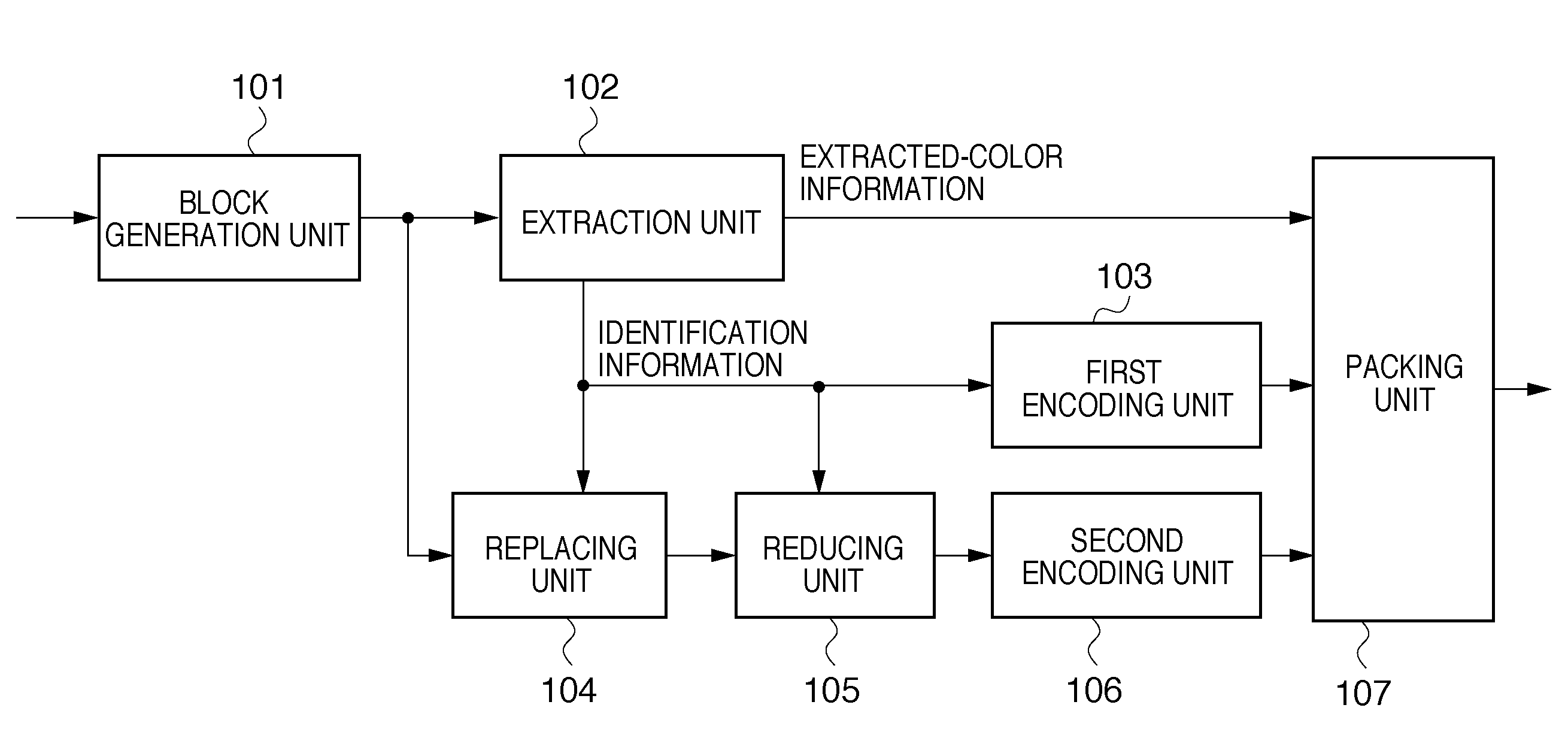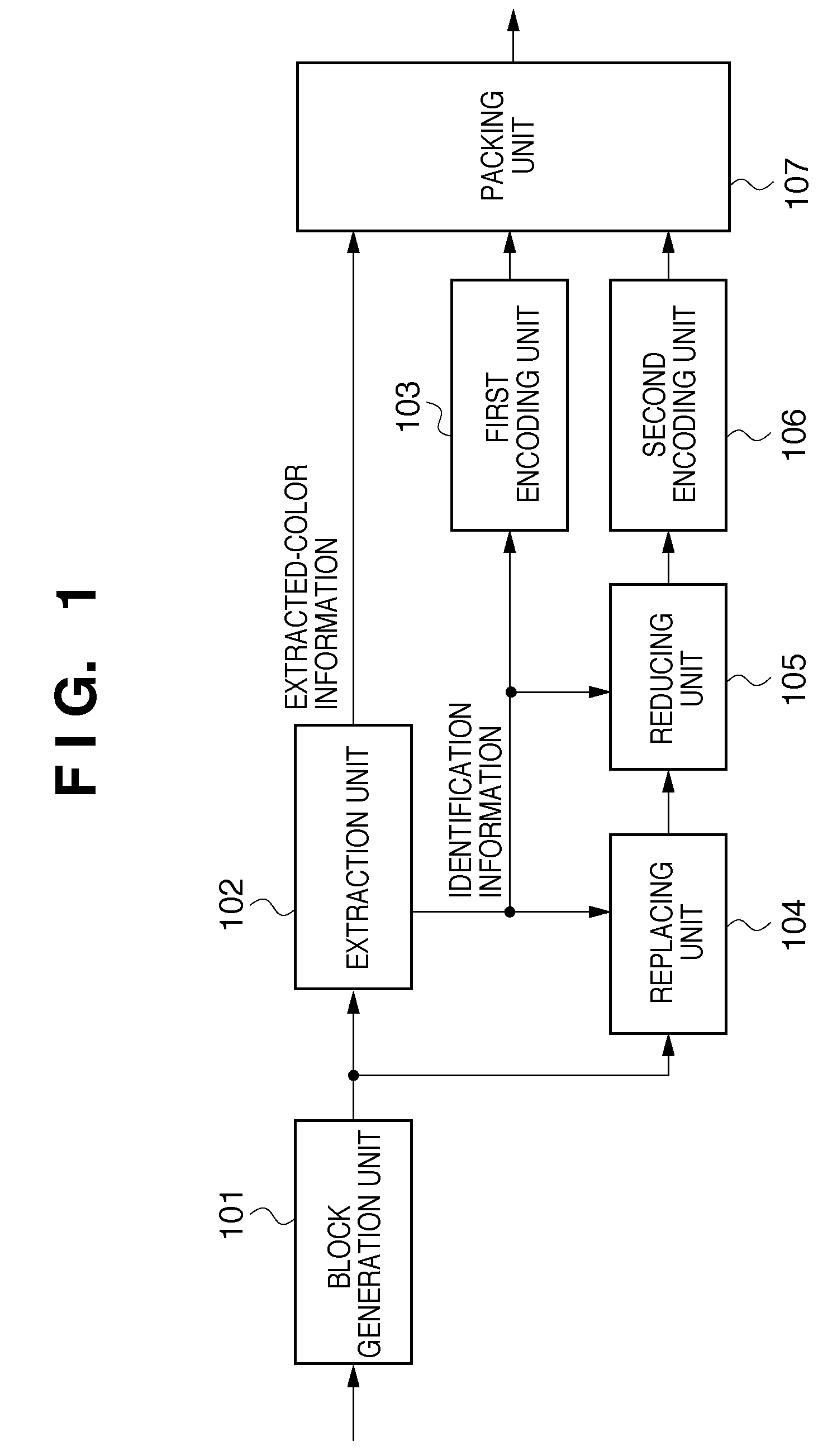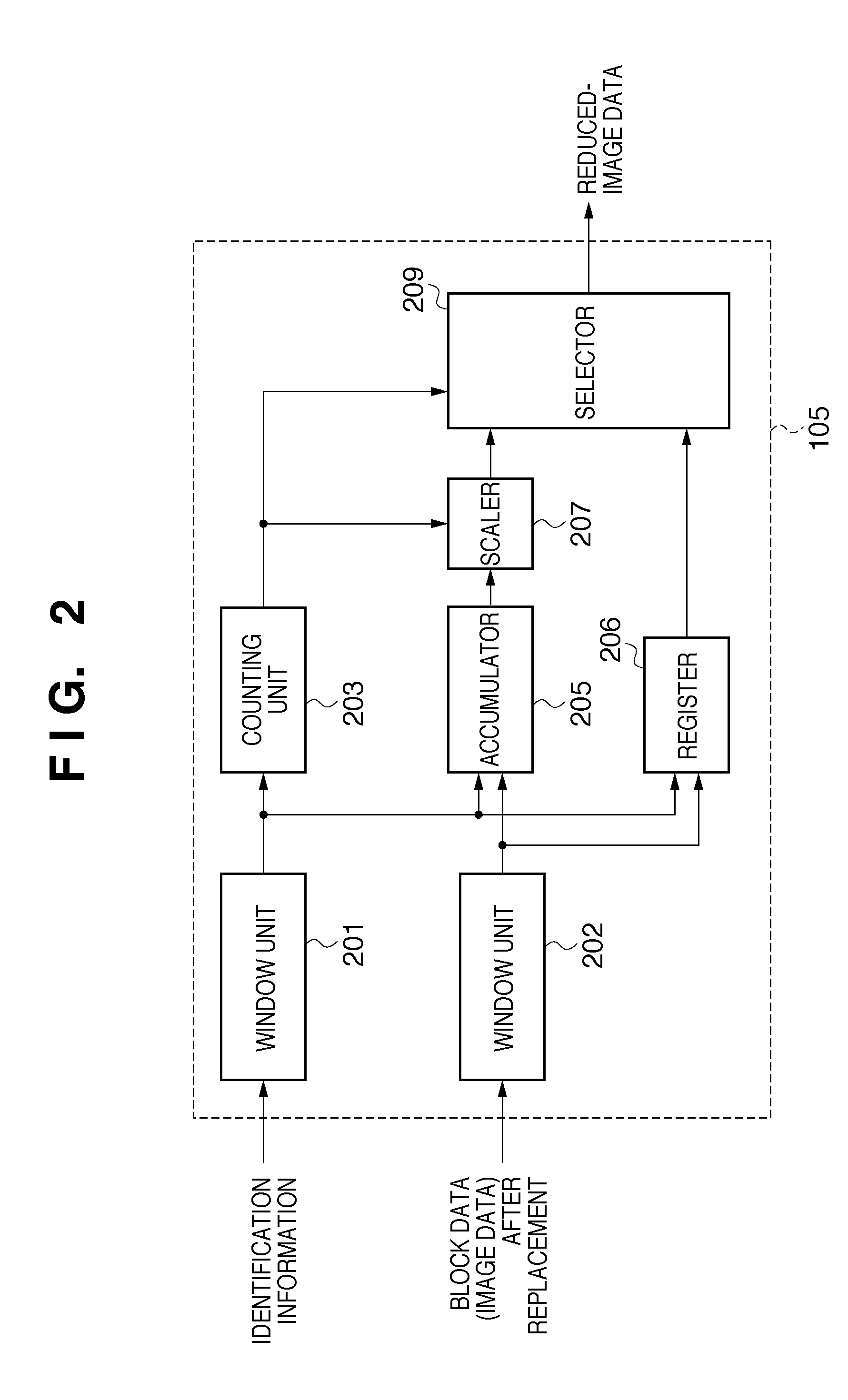Image encoding apparatus and method of controlling same
a technology of image data and encoding apparatus, applied in the field of image encoding apparatus, can solve the problem that the decline in image quality will not be visible, and achieve the effect of suppressing the decline in image quality and high compression efficiency
- Summary
- Abstract
- Description
- Claims
- Application Information
AI Technical Summary
Benefits of technology
Problems solved by technology
Method used
Image
Examples
first embodiment
Modification of First Embodiment
[0069]Processing similar to that of the first embodiment may be implemented by a computer program executed by a general-purpose information processing apparatus (a typical example of which is a personal computer).
[0070]FIG. 7 is a flowchart illustrating encoding processing in this computer program. It should be noted that the computer program for the processing according to FIG. 7 has been stored on a hard disk and is read into a RAM by a CPU that functions as a controller.
[0071]In step S1, image data (16×16 pixels) having the size of one block is input from image data to be encoded. The source of the input may be an image scanner or a storage device in which image data that has not been compressed is stored as a file.
[0072]In step S2, an extracted color is determined from the input block data and information concerning the extracted color that has been determined is held in the RAM temporarily. Next, in step S3, identification information (16×16 bits...
second embodiment
[0079]In a case where all pixels within the window of size 2×2 pixels are pixels having a replacement color, the selector 209 (see FIG. 2) of the first embodiment outputs this replacement color as the pixel value of one pixel after execution of reduction processing. Accordingly, if a pixel of a non-extracted color and a pixel indicated by a replacement color are mixed with the 8×8 pixels obtained by reduction processing, there is a possibility that the value of the non-extracted-color pixel will be influenced by the extracted color owing to the DCT and quantization of JPEG encoding.
[0080]Accordingly, in a second embodiment of the invention, an example in which this point is further improved upon will be described.
[0081]The configuration of the image encoding apparatus according to the second embodiment is the same as that shown in FIG. 1; what differs is the configuration of the reducing unit 105.
[0082]FIG. 5 is a block diagram of the reducing unit 105 according to the second embodi...
third embodiment
[0090]The processing executed by the replacing unit 210 of the second embodiment may be adapted as set forth below.
[0091]When the pixel of interest is a replacement color, it is replaced with the average value of neighboring pixel values for which the count value is “1” or greater. In the case of FIG. 6, if it is assumed that the pixel value after replacement of the pixel of interest will be P5′, then P5′ is calculated according to the following equation:
P5′=(P1+P2+P3+P4+P7+P8+P9) / 7
Actions and effects similar to those of the second embodiment can be obtained with the third embodiment as well.
PUM
 Login to View More
Login to View More Abstract
Description
Claims
Application Information
 Login to View More
Login to View More - R&D
- Intellectual Property
- Life Sciences
- Materials
- Tech Scout
- Unparalleled Data Quality
- Higher Quality Content
- 60% Fewer Hallucinations
Browse by: Latest US Patents, China's latest patents, Technical Efficacy Thesaurus, Application Domain, Technology Topic, Popular Technical Reports.
© 2025 PatSnap. All rights reserved.Legal|Privacy policy|Modern Slavery Act Transparency Statement|Sitemap|About US| Contact US: help@patsnap.com



